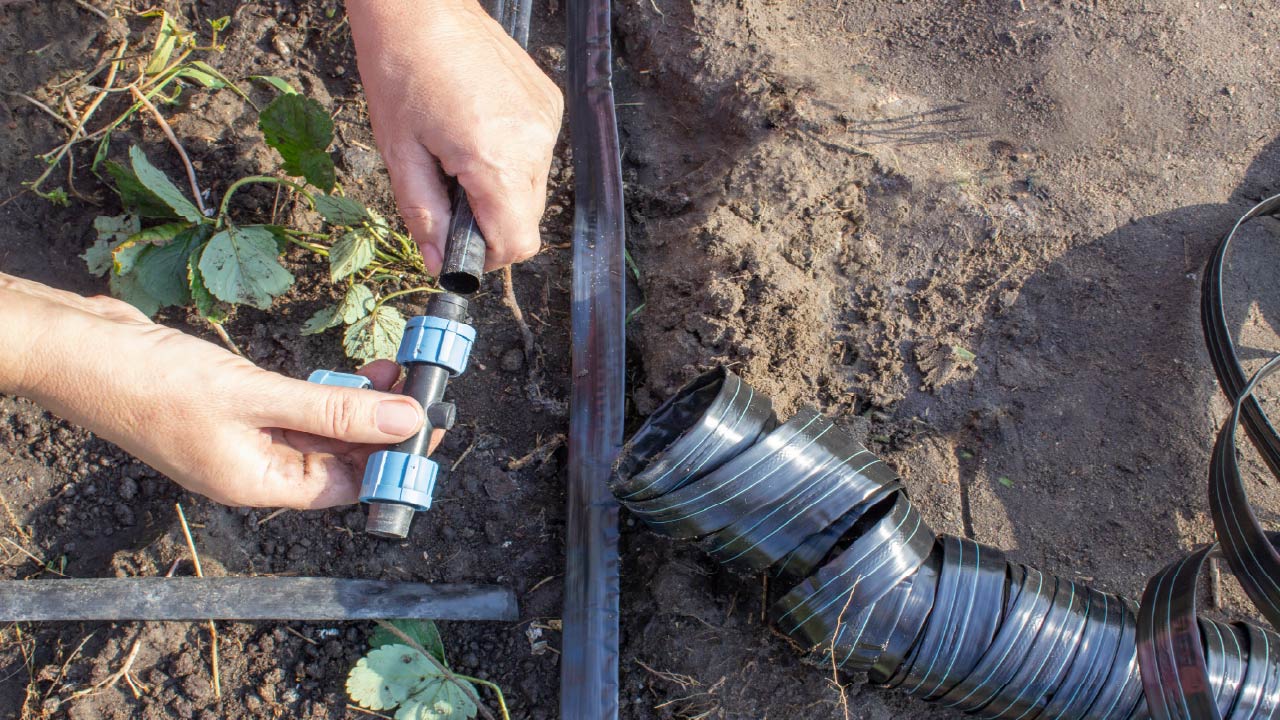Early Summer Irrigation System Maintenance
Jun 16th 2025
A drip irrigation system is the most efficient and eco-friendly way to irrigate your plants. These systems make it easy to keep your garden well-watered, but they cannot be set and forgotten, as you still need to check on them. Often, the first time we notice an issue is when we see our plants wilting or a stream of water leaking from irrigation tubing. These problems arise during hot and dry months when plants need plenty of water. Therefore, the drip irrigation system also requires maintenance to function properly. Proper irrigation system maintenance conserves water and keeps your landscape healthy and hydrated.
Let's explore the essential early summer maintenance steps for your drip irrigation system to ensure your garden stays healthy and vibrant throughout the season.
Check the Water Filter
The first thing to check is your water filter, which is the most ignored component. Open your water filter and inspect its screen. If you find any dirt buildup, remove the screen and clean it. Once the screen is cleaned, put it back and close the filter.
The filter prevents sediments and contaminants from entering the system, as they can clog the lines. Cleaning the water filter periodically removes debris and ensures it does its job effectively. A clogged filter screen will also block water flow through your system and impede it from delivering the amount of water it was supposed to.
All the filters at DripWorks come with removable screens that can be cleaned. If your irrigation system doesn't have a filter, it is best to install one.
Furthermore, flush the main drip lines, sub-mains, and laterals to remove all debris from pipes. Flush the system until the water comes out clear.
Replace Broken and Damaged Emitters
Replacing broken and damaged emitters is another crucial step during summer irrigation maintenance. Inspect emitters for clogs or damage. Check each dripper/emitter in your system to ensure that water flows at the expected rate. If water is pouring out much slower, it could indicate that a dripper is almost clogged. If the emitter is cleanable, remove the head and clean the debris. If it is not cleanable, you can replace it if you believe the plant is not receiving enough water to stay healthy.
Moreover, check the placement of all emitters and make sure they are in the correct position. Replace broken and missing drip emitters to keep your drip system working smoothly. Emitters should be installed near the edge of the root ball on new plantings and moved to the drip line of mature plants.
Inspecting Irrigation Fittings and Connections
An essential component of drip irrigation maintenance is ensuring that the valves, tubing, and fittings in each zone of your system are secure. If anything seems loose or damaged, replace it as soon as possible. While strolling through your system, watch for any water leaks around fittings. Loose fittings can cause water loss and harm to your landscaping.
Fittings may slip when irrigation systems undergo pressure changes. Wildlife, such as deer and squirrels roaming through the garden, might also dislodge tubing and fittings. It is usually important to walk your line regularly throughout the season to ensure the system runs efficiently.
Check System Pressure
Use a pressure gauge to ensure the pressure regulator works properly and adjust water pressure as needed. If the pressure in your drip irrigation system is too high, fittings may fail, causing tubing to break off. Emitters can also pop off the tubing due to high pressure, resulting in water loss. Alternatively, if the pressure is too low, your plants will not receive enough water.
Check the manufacturer's recommendations for the optimal pressure range in your irrigation system. To prevent pressure problems, install a pressure regulator on the drip system.
Check Irrigation Tubing
As you inspect your irrigation system, look for any pinched, broken, or kinked tubing and straighten or replace it. Look for holes in the tubing or wet areas near the tubing where no emitters are present. Ensure all tubing is attached to the correct emitters and all connections are secure. Rodents can puncture the tubing in your garden. It is important to spot these holes early, as they can cause the system to depressurize.
Repair and maintain your drip tape with this amazing Drip Tape Repair and Expansion Kit.
Adjust Settings on Your Timer
Your irrigation controller needs to be adjusted every season to maintain a healthy landscape. Fine-tune the timer watering times for the hot season to ensure sufficient watering and prevent overwatering, especially during the peak summer months.
Most irrigation controllers or timers have four essential adjustment options: irrigation frequency, start time, duration times, and seasonal percentage. Ensure the system is set to run at the right times and for the right duration. Early morning watering is ideal in summer to reduce evaporation and maximize watering efficiency.
Perform Routine Checks
Create a regular maintenance schedule to keep your system in top condition. This includes adjustments according to changing weather patterns and regular checks for any issues that may arise. Perform routine checks on your irrigation system components to prevent failures. Regularly inspect components, such as emitters, valves, fittings, tubing, and the timer, to spot potential issues before they become serious problems. If any component is broken or damaged, repair or replace it instantly to avoid worsening the issue.
The Bottom Line
Maintaining a healthy and beautiful landscape requires regular irrigation upkeep. Early summer irrigation system maintenance prepares your system for the upcoming hot months. We recommend maintaining your drip irrigation system at least once or twice a year. This will help you conserve water, save money, and let your plants thrive.
Visit the DripWorks irrigation store For high-quality irrigation products from top brands. Optimize your irrigation system to maintain a beautiful landscape.

